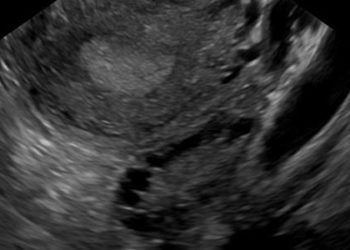Childhood adiposity associated with adolescent polycystic ovary syndrome
1. Participants with Polycystic Ovary Syndrome (PCOS) had greater adiposity measures (including mean Body Mass Index (BMI) Z score, truncal fat mass, and percentage of total fat mass) at midchildhood, early and mid-teen visits, as well as higher adiponectin to leptin ratio (a marker of adipocyte dysfunction) in early and mid-teen visits when unadjusted for maternal and social factors.
2. After adjusting for maternal and social factors, participants with PCOS still showed higher truncal fat at midchildhood and early teen visits as well as lower adiponectin to leptin ratio at mid-teen visits.
Evidence Rating Level: 1 (Excellent)
Study Rundown: Polycystic Ovary Syndrome (PCOS) is a prevalent endocrine condition in females that affects cardiometabolic and reproductive health, however, its natural history among young females is not well understood. This prospective cohort study used bivariate and multivariable logistic regression analysis to assess the association between cardiometabolic markers measured at midchildhood (mean age 7.9 years), early teen (mean age 13.2 years), and midteen (mean age 17.6 years) visits with mid to late adolescent PCOS. The primary outcome of this study was PCOS assessed in mid to late adolescence (midteen visit and/or written questionnaire at the age of 19). Participants were considered to have PCOS if they self-reported a PCOS diagnosis or had clinical and/or biochemical characteristics consistent with probable PCOS (defined as ovulatory dysfunction as well as indications of biochemical or clinical hyperandrogenism). According to the study results, 13% of the 417 participants (i.e., 56 individuals) met the PCOS criteria in mid to late adolescence. Adiposity and adipocyte dysfunction measures were significantly different in participants with PCOS than those without. This study was limited by its use of Dehydroepiandrosterone Sulfate (DHEA-S) for measuring androgen concentrations (rather than the gold standard measure i.e., free testosterone) which may have increased the PCOS prevalence in the study sample, as well as relying on subjects’ self-reports for PCOS diagnosis and phenotype categorization.
Click to read the study in AAP
Relevant Reading: Relationship between body composition, insulin resistance, and hormonal profiles in women with polycystic ovary syndrome
In-depth [prospective cohort]: Out of 2128 live births from the Project Viva cohort, 417 participants with PCOS phenotype who completed mid-teen visits (mean age 13.2 years) and had complete data for the primary outcome were included in the final analysis of the study. After adjusting for maternal factors (maternal education and PCOS) and social factors (child race and ethnicity), participants with PCOS showed a greater truncal fat mass at midchildhood visits with an odds ratio of 1.42 (95% CI:1.03–1.95) as well as lower adiponectin to leptin ratio at mid-teen visits with an odds ratio of 0.14 (95% CI: 0.03–0.58). Findings from this study suggested that childhood and early teen adiposity and adipocyte dysfunction may be associated with a higher risk of PCOS later in life and play a key role in the pathogenesis of PCOS.
Image: PD
©2024 2 Minute Medicine, Inc. All rights reserved. No works may be reproduced without expressed written consent from 2 Minute Medicine, Inc. Inquire about licensing here. No article should be construed as medical advice and is not intended as such by the authors or by 2 Minute Medicine, Inc.







